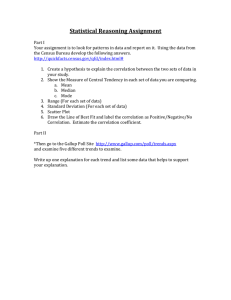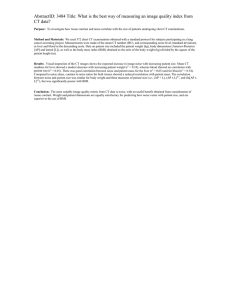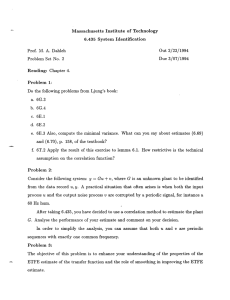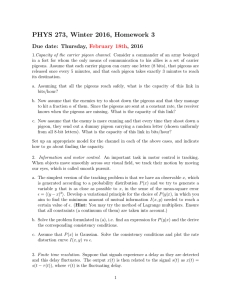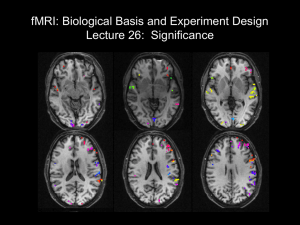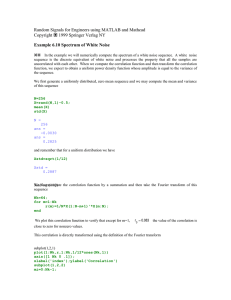Homework February 10, 2015 (to be returned on February 17)
advertisement
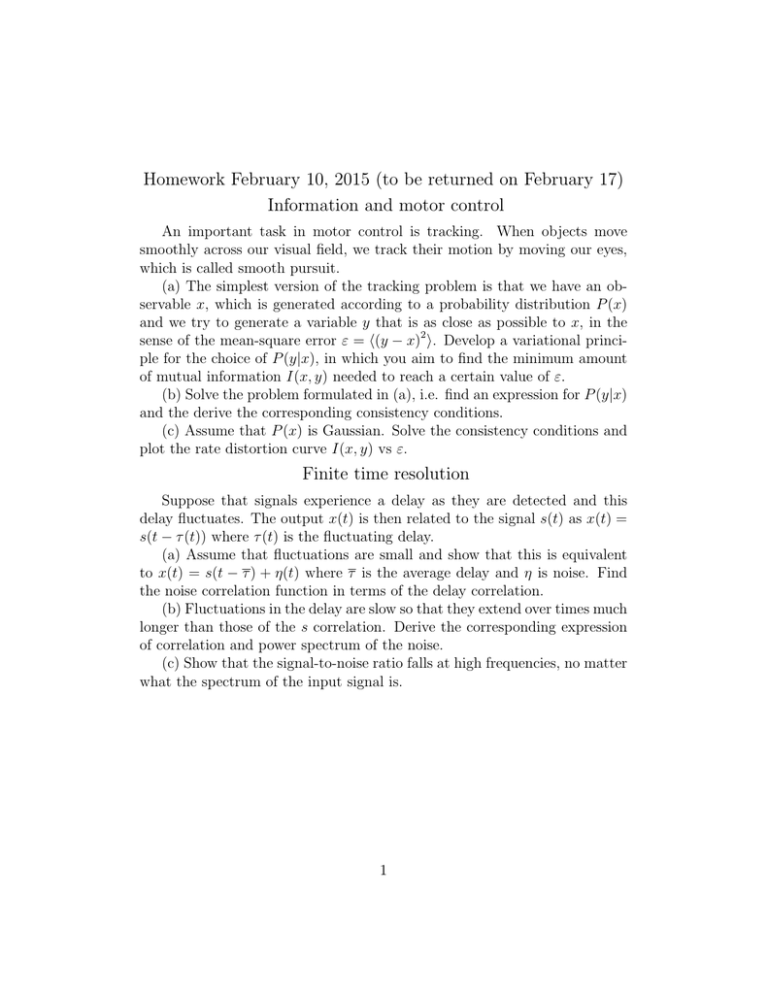
Homework February 10, 2015 (to be returned on February 17) Information and motor control An important task in motor control is tracking. When objects move smoothly across our visual field, we track their motion by moving our eyes, which is called smooth pursuit. (a) The simplest version of the tracking problem is that we have an observable x, which is generated according to a probability distribution P (x) and we try to generate a variable y that is as close as possible to x, in the sense of the mean-square error ε = h(y − x)2 i. Develop a variational principle for the choice of P (y|x), in which you aim to find the minimum amount of mutual information I(x, y) needed to reach a certain value of ε. (b) Solve the problem formulated in (a), i.e. find an expression for P (y|x) and the derive the corresponding consistency conditions. (c) Assume that P (x) is Gaussian. Solve the consistency conditions and plot the rate distortion curve I(x, y) vs ε. Finite time resolution Suppose that signals experience a delay as they are detected and this delay fluctuates. The output x(t) is then related to the signal s(t) as x(t) = s(t − τ (t)) where τ (t) is the fluctuating delay. (a) Assume that fluctuations are small and show that this is equivalent to x(t) = s(t − τ ) + η(t) where τ is the average delay and η is noise. Find the noise correlation function in terms of the delay correlation. (b) Fluctuations in the delay are slow so that they extend over times much longer than those of the s correlation. Derive the corresponding expression of correlation and power spectrum of the noise. (c) Show that the signal-to-noise ratio falls at high frequencies, no matter what the spectrum of the input signal is. 1




